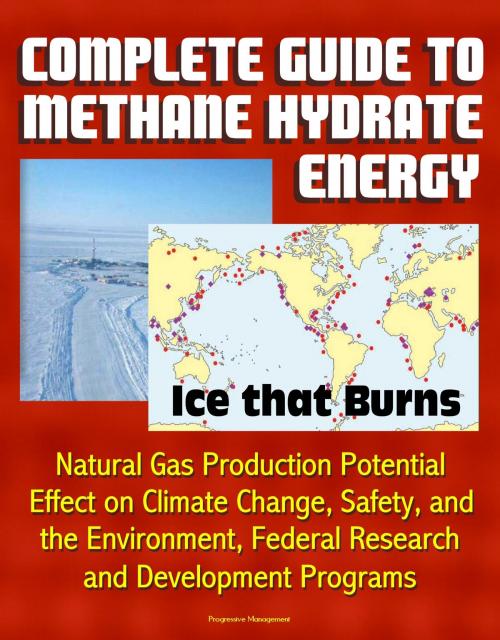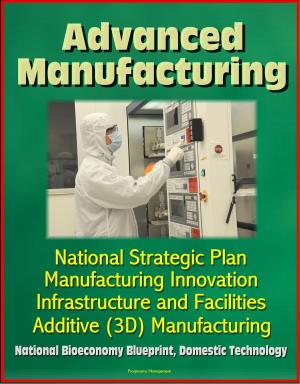Complete Guide to Methane Hydrate Energy: Ice that Burns, Natural Gas Production Potential, Effect on Climate Change, Safety, and the Environment, Federal Research and Development Programs
Nonfiction, Science & Nature, Technology, Power Resources, Science, Earth Sciences| Author: | Progressive Management | ISBN: | 9781301011810 |
| Publisher: | Progressive Management | Publication: | March 16, 2013 |
| Imprint: | Smashwords Edition | Language: | English |
| Author: | Progressive Management |
| ISBN: | 9781301011810 |
| Publisher: | Progressive Management |
| Publication: | March 16, 2013 |
| Imprint: | Smashwords Edition |
| Language: | English |
In March 2013, Japanese researchers announced a breakthrough in the extraction of natural gas from methane hydrates. This marked the latest important development in the quest for energy from methane hydrate, known as the ice that burns. This ebook presents a comprehensive collection of up-to-date publications about this vital new resource, covering all aspects of the field, including the possible effects of hydrate gas production on climate change.
Contents include: Energy Resource Potential of Methane Hydrate; Methane Hydrate Program Report to Congress - October 2012; Interagency Coordination on Methane Hydrates R&D: Demonstrating the Power of Working Together; Report of the Methane Hydrate Advisory Committee on Methane Hydrate Issues and Opportunities including Assessment of Uncertainty of the Impact of Methane Hydrate on Global Climate Change; Report to Congress - An Assessment of the Methane Hydrate Research Program and An Assessment of the 5-Year Research Plan of the Department of Energy Prepared by the Federal Methane Hydrate Advisory Committee - June 2007; An Interagency Roadmap for Methane Hydrate Research and Development; Methane Hydrates R&D Program.
Methane hydrate is a cage-like lattice of ice inside of which are trapped molecules of methane, the chief constituent of natural gas. If methane hydrate is either warmed or depressurized, it will revert back to water and natural gas. When brought to the earth's surface, one cubic meter of gas hydrate releases 164 cubic meters of natural gas. Hydrate deposits may be several hundred meters thick and generally occur in two types of settings: under Arctic permafrost, and beneath the ocean floor. Methane that forms hydrate can be both biogenic, created by biological activity in sediments, and thermogenic, created by geological processes deeper within the earth. While global estimates vary considerably, the energy content of methane occurring in hydrate form is immense, possibly exceeding the combined energy content of all other known fossil fuels.
The U.S. Department of Energy methane hydrate program aims to develop the tools and technologies to allow environmentally safe methane production from arctic and domestic offshore hydrates. The program includes R&D in:
Production Feasibility: Methane hydrates occur in large quantities beneath the permafrost and offshore, on and below the seafloor. DOE R&D is focused on determining the potential and environmental implications of production of natural gas from hydrates.
Research and Modeling: DOE is studying innovative ways to predict the location and concentration of subsurface methane hydrate before drilling. DOE is also conducting studies to understand the physical properties of gas hydrate-bearing strata and to model this understanding at reservoir scale to predict future behavior and production.
Climate Change: DOE is studying the role of methane hydrate formation and dissociation in the global carbon cycle. Another aspect of this research is incorporating GH science into climate models to understand the relationship between global warming and methane hydrates.
In March 2013, Japanese researchers announced a breakthrough in the extraction of natural gas from methane hydrates. This marked the latest important development in the quest for energy from methane hydrate, known as the ice that burns. This ebook presents a comprehensive collection of up-to-date publications about this vital new resource, covering all aspects of the field, including the possible effects of hydrate gas production on climate change.
Contents include: Energy Resource Potential of Methane Hydrate; Methane Hydrate Program Report to Congress - October 2012; Interagency Coordination on Methane Hydrates R&D: Demonstrating the Power of Working Together; Report of the Methane Hydrate Advisory Committee on Methane Hydrate Issues and Opportunities including Assessment of Uncertainty of the Impact of Methane Hydrate on Global Climate Change; Report to Congress - An Assessment of the Methane Hydrate Research Program and An Assessment of the 5-Year Research Plan of the Department of Energy Prepared by the Federal Methane Hydrate Advisory Committee - June 2007; An Interagency Roadmap for Methane Hydrate Research and Development; Methane Hydrates R&D Program.
Methane hydrate is a cage-like lattice of ice inside of which are trapped molecules of methane, the chief constituent of natural gas. If methane hydrate is either warmed or depressurized, it will revert back to water and natural gas. When brought to the earth's surface, one cubic meter of gas hydrate releases 164 cubic meters of natural gas. Hydrate deposits may be several hundred meters thick and generally occur in two types of settings: under Arctic permafrost, and beneath the ocean floor. Methane that forms hydrate can be both biogenic, created by biological activity in sediments, and thermogenic, created by geological processes deeper within the earth. While global estimates vary considerably, the energy content of methane occurring in hydrate form is immense, possibly exceeding the combined energy content of all other known fossil fuels.
The U.S. Department of Energy methane hydrate program aims to develop the tools and technologies to allow environmentally safe methane production from arctic and domestic offshore hydrates. The program includes R&D in:
Production Feasibility: Methane hydrates occur in large quantities beneath the permafrost and offshore, on and below the seafloor. DOE R&D is focused on determining the potential and environmental implications of production of natural gas from hydrates.
Research and Modeling: DOE is studying innovative ways to predict the location and concentration of subsurface methane hydrate before drilling. DOE is also conducting studies to understand the physical properties of gas hydrate-bearing strata and to model this understanding at reservoir scale to predict future behavior and production.
Climate Change: DOE is studying the role of methane hydrate formation and dissociation in the global carbon cycle. Another aspect of this research is incorporating GH science into climate models to understand the relationship between global warming and methane hydrates.















